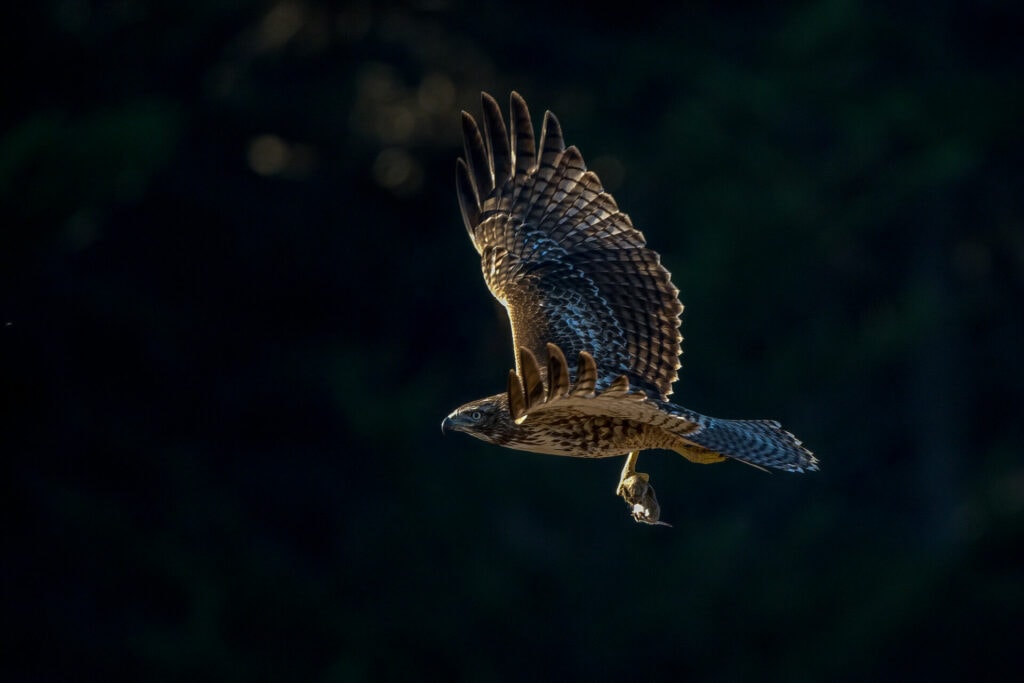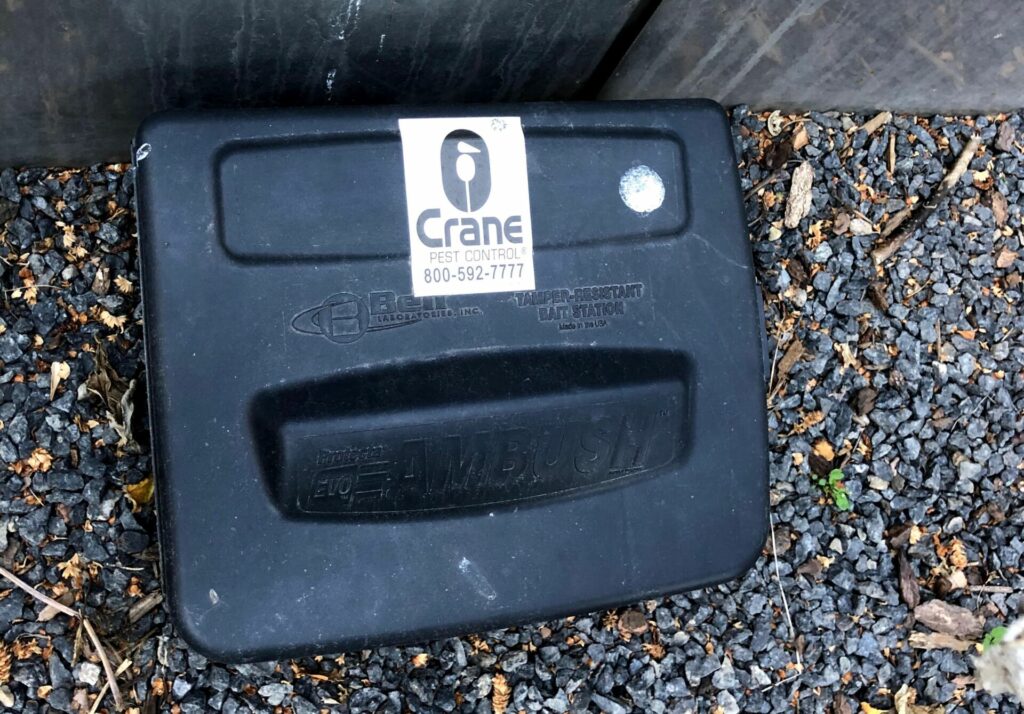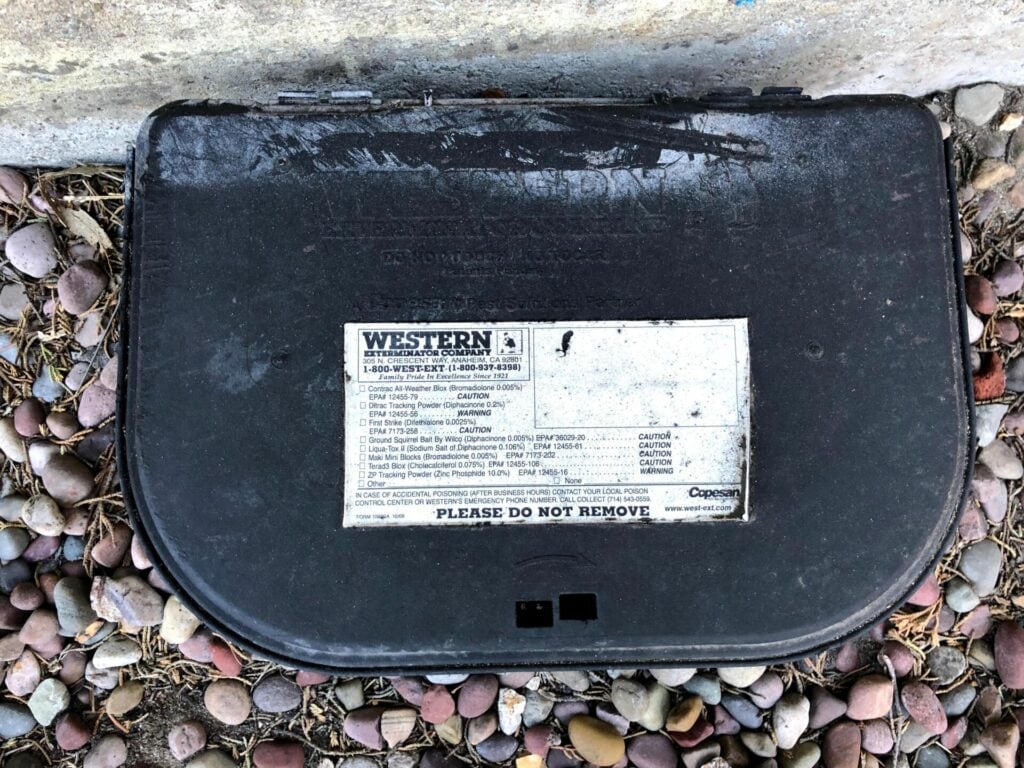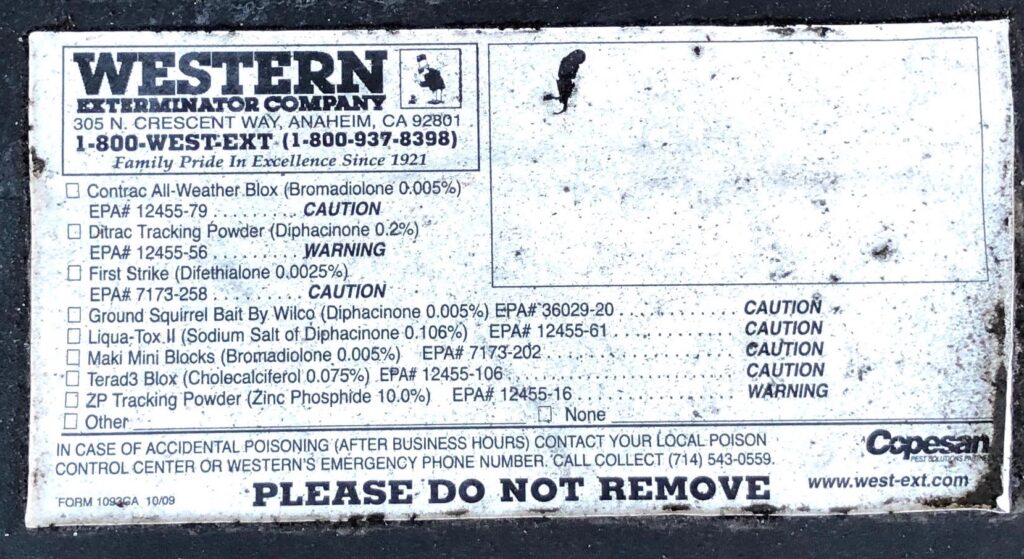Help enforce California’s rodenticide ban
By Dan Scali
A decade ago, Golden Gate Bird Alliance cosponsored a Don’t Take the Bait campaign that asked San Francisco businesses and residents to voluntarily avoid selling or using the most harmful rodenticides. GGBA then went on to fight rodenticides on a larger scale, alongside other grassroots nonprofits like Raptors Are the Solution (RATS), an advocacy group started by former GGBA staffer Lisa Owens Viani.
Wildlife won a victory in 2014 when California banned all retail sales of second-generation anticoagulant rodenticides (SGARs), the newest and deadliest class of poisons. A year later, the E.P.A. followed suit on a national level.


A quick refresher: While both first- and second-generation poisons kill non-target wildlife, the latter are stronger and far more dangerous to raptors, other wild predators, pets, and even children. Anticoagulant rodenticides work by causing slow internal bleeding: It can take several days for the poisoned animal to die, during which time it may return for repeat feedings, accumulating even more poison in its body and becoming a super-deadly meal for predators and scavengers.
(For a more in-depth history of the relationship between raptors and rodenticides, check out Cathy Bell’s article in Living Bird magazine.)
The 2014 retail ban was a step in the right direction but in fact did little to reduce secondary poisonings or the accumulation of SGAR toxins in ecosystems. Commercial use by pest control companies was the much bigger problem and needed an additional legislative solution. In September 2020—after years of continued pressure from wildlife advocates—Gov. Gavin Newsom signed into law AB 1788, banning SGARs in California, with certain public health-related exceptions. The new law took effect in January of this year and is a huge victory, but we still have work to do to ensure compliance.
Thankfully, Golden Gate Bird Alliance conservation veteran and all-around rock star Noreen Weeden had our and the raptors’ backs. She brought the new law to the attention of GGBA’s San Francisco Conservation Committee this spring and shared how we can continue to advocate.
Bait stations containing SGARs should be reported to your local Agriculture Commissioner. (Yes, even urban counties like San Francisco have Ag Commissioners.) You can find a list of the prohibited SGARS on the RATS web site. Also report any box that does not label its ingredients, since that is a violation of pesticide regulations.
Noreen has already had some success. She noticed several bait stations at Downtown High School in Potrero Hill that were labeled with the banned Bromadiolone. She sent details and a photograph to the San Francisco Ag Commissioner via the office’s “311” number. Right away representatives from the Department of Public Health responded and contacted San Francisco Unified School District — which then began working to resolve the issue.
So when you’re out birding your urban spaces, enjoying nature, or just walking your dog, keep an eye out for bait stations and check their labels for any of those banned SGARs.

Since Noreen made me and others on the conservation committee aware of the new law, I’ve noticed bait traps all over the city, including places like Lincoln Park golf course, a retirement community in the Sunset, Seal Rock Inn, and Salesforce Park. One way these traps are labelled is with a series of checkboxes for different baits. None of the boxes that I saw announced usage of a banned ingredient, but some left all the ingredient checkboxes unchecked—a potential violation since they don’t disclose which poisons are in use. One of the traps included banned poisons on its checklist as well as legal ones.


I hope these boxes aren’t using SGARs. But if they don’t label them, we can’t know. So now that I’ve finished this blog post, it’s time for me to file some reports with 311. The raptors in my neighborhood will appreciate it.
Contact info for county Agriculture Commissioners:
Alameda County: Cathy Roache, (510) 670-5232 or by web form
Contra Costa County: Matthew Slattengren, (925) 608-6600 or agcommissioner@ag.cccounty.us
San Francisco County: Cree Morgan, call 311
Dan Scali is a birding-obsessed science educator and member of Golden Gate Bird Alliance’s San Francisco Conservation Committee. He first got involved with GGBA in 2009, scouting around downtown skyscrapers for victims of window strikes as part of Audubon’s Lights Out for Birds campaign. Nowadays you can find him scouting for birds near his home in the Richmond District or across town at the still under-birded McLaren Park.
